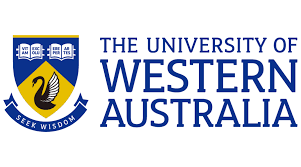University of Western Australia: Australia delivers critical subsystem for VISTA telescope
An Australian-built major subsystem for the European Southern Observatory’s 4MOST instrument has arrived in Germany at the Leibniz Institute for Astrophysics Potsdam (AIP) ready for testing prior to installation on the four-metre VISTA telescope located in the Atacama Desert in Chile.
The subsystem, called AESOP (Australian-European Southern Observatory Positioner) is an optical fibre positioner, designed and built by Astralis in Sydney. Once installed, it will allow astronomers to measure the light from thousands of galaxies at a time.
Professor Simon Driver from the University of Western Australia node of the International Centre for Radio Astronomy Research (ICRAR) said the AESOP subsystem resembles the spines of an Echidna.
“Each spine contains an optical fibre that’s precisely positioned to receive the incoming light from faint galaxies before sending it on to be analysed by other instruments,” said Professor Driver.
“The optical fibres are positioned with an accuracy of less than 10 micrometres—about one fifth the thickness of a human hair—and all 2,448 can be moved and repositioned in less than two minutes.
“That’s 120 times faster than the technology we’re using now at the Australian Astronomical Observatory in Siding Springs. It’s an incredible machine that will allow us the map the Universe more than 10x faster.”
Professor Simon Driver
“The University of Western Australia and Curtin University contributed significant funding to the design and construction of the subsystem, and secured several million dollars in funding from European-based institutes.”
“It’s taken four years to design and three years to manufacture this technology, but initial tests before sending it to Germany have shown excellent performance.
“The delivery of the AESOP subsystem to Germany marks the start of the 4MOST system—it’s an exceptional achievement for astronomical research in Australia,” said Professor Driver.
Commencing operations in early 2024, 4MOST will be the largest spectroscopic survey facility of its kind in the Southern hemisphere, addressing today’s most pressing astronomical questions in the fields of Galactic archaeology, high-energy astrophysics, galaxy evolution and cosmology.
The largest of the extragalactic surveys using 4MOST will be the Wide Area VISTA Extragalactic Survey (WAVES) led by ICRAR’s UWA node and Hamburg Observatory.
“WAVES will involve two surveys—WAVES-wide and WAVES-Deep—and these will collectively measure the distances to almost 2 million galaxies,” said Dr Claudia Lagos, an ICRAR/UWA astronomer and a member of the WAVES team.
WAVES-Wide will study the properties of nearby galaxies to very low masses and unveil the fine lace-like structure of the dark matter in our nearby Universe. WAVES-Deep will probe how the pattern defined by the dark matter has evolved over several billion years of cosmic history.
“The WAVES survey, using the Australian built fibre-positioner, will provide an unprecedented view of how dark matter is distributed in the Universe and how it has evolved over billions of years,” said Dr Lagos.
“Roughly 80% of the matter in the Universe is made up of dark matter, and so far, we have been unable to unveil its nature.
“This instrument and our survey will help shine a light on one of the biggest mysteries for today’s astronomers.”

